It’s apple season – one of my favorite times of the year. I grew up not far from a huge apple orchard. Every season we would pile into the car and head to the now-closed Bell’s Apple Orchard near our home in Barrington, Illinois. Mom would buy baskets full of apples to make gallons of applesauce for our freezer and her incomparable apple pie. To this day, I have never had one that even comes close to hers. We would also come home with gallon jugs of fresh-pressed, unfiltered, un-pasteurized apple cider. I would drink so much of this juice my stomach would ache.
I was thrilled last year to have made the acquaintance of Albert Nigg and his lovely family from Canton Graubunden in Switzerland. Albert is deeply passionate about keeping rural traditions alive and I feel so lucky he is nice enough to share his knowledge with the likes of me. Just imagine my joy when he invited me to watch him press apples he gathered to make Apfelmosch (apple juice).
Albert took us to a little area surrounded by mountains in the Sargans region of Graubundun called Rhiau (pronounced ree ow). Rhi being local dialect for the Rhine River and Au meaning next to. We drove up to a small, indistinct building with a green sign that said RHIAU MOSCHLI SARGANS.
This, we were told, is where people come from a 30 kilometer radius to press their apples. Anyone can do it but they must book a time if they have a lot of apples. 100 kilo (220 pounds) of apples yields about 70 liters (18.5 gallons) of juice. Normally, 70,000 liters of juice is pressed in a season. The place isn’t heated or insulated. They typically stay open through October but if it gets too cold, pipes will freeze so they stop operating for the season.
When it was Albert’s turn, he pulled the truck with about a ton of apples piled in crates up to a large table on the side of the building.
Crates were unloaded.
The apples were tipped into a large, rectangular metal basin set right into the table.
Water gushed out of a large pipe to wash the fruit.
Albert and his father-in-law pushed the apples through an opening at the back of the basin using a big, wooden squeegee.
The washed apples were sucked up out of the sink area on the first floor and transported upstairs through a large, metal pipe.
A few at a time, apples dropped into what looks from the outside like a massive wooden box that sits up on the second floor.
Inside, it’s lined with metal and sloped with a small opening at the lowest level in one corner. Apples disappeared into this square funnel.
Then were deposited into the chopper sitting above the press on the first floor.
Chunks of chopped apples dropped into the press and the juice was squeezed out.
Solids shot out of a metal tube and landed in an open trailer at the side of the building.
This is used for animal feed and is left outside for the taking.
Anyone like me who juices at home knows that a byproduct of juicing is a thick foam. The foam is deposited in a trough at the front of the machine and periodically scooped away.
Some people take home fresh juice but that can ferment and turn to alcohol pretty quickly. Almost all of the juice is pasteurized so it can be stored for long periods of time.
Juice destined for pasteurization is sent through hoses up to plastic storage tanks on the second floor.
Everyone’s name is put on their own bin. The juice is left to sit 8 to 12 hours for the sediment to settle out. This is a more primitive method of filtering. Mr. Bizozzero told me Swiss only like the juice clear whereas just over the border in Germany, they like to drink it cloudy.
Once the sediment has settled, a hose is run from the storage bin on the second floor down to a pasteurization tank on the first floor that pretty much looks like and acts like the water heater in my house.
The juice is heated to 80 to 85 degrees Celsius (176 to 185 degrees Fahrenheit). Another hose runs from the pasteurization tank to a 10 liter (a bit over 2 1/2 gallon) metal container that looks like a home BBQ propane tank suspended from the ceiling.
Mr. Bizozzer controls whether 5 or 10 liters flow into this tank because, from there, he fills 5 and 10 liter thick plastic bags.
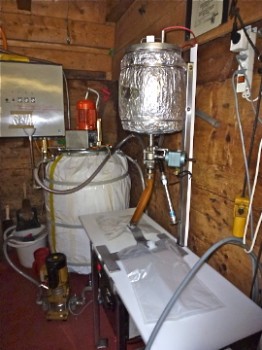 A sealed dispenser nozzle is inserted into each.
A sealed dispenser nozzle is inserted into each.
The bag is placed in a specially designed cardboard box with a hole punched out for the nozzle.
When you are ready to drink, just pull off the tab and squeeze the nozzle. The bag contract around the juice as the bag empties preventing oxygen from coming in contact so, even open, the juice can be held a while, especially in the refrigerator. Unopened, it can last until next season.
After a wonderful afternoon, Albert drove us to the train station.
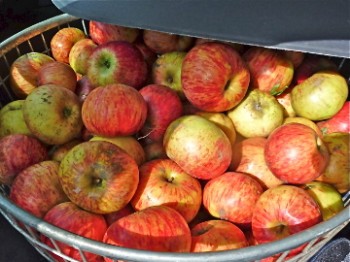
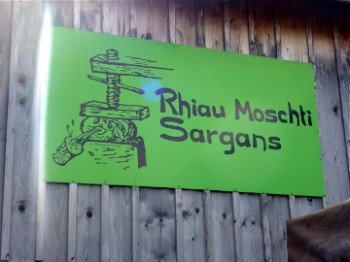
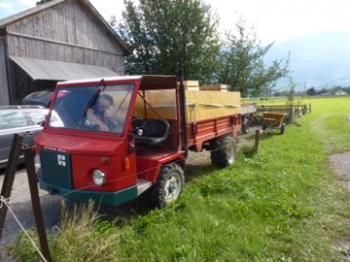
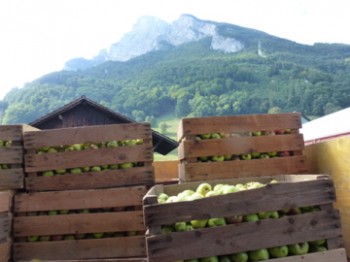
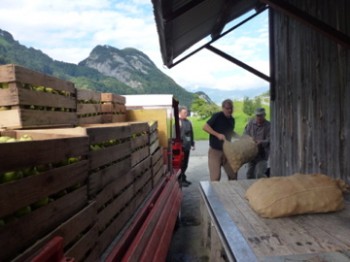
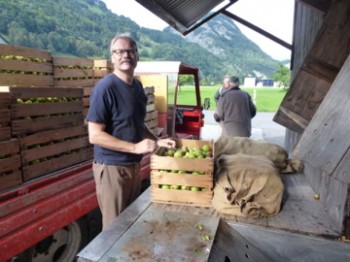
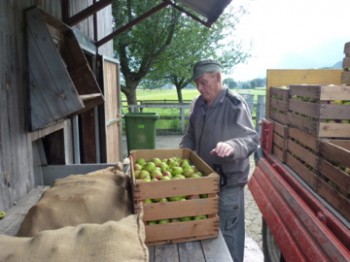
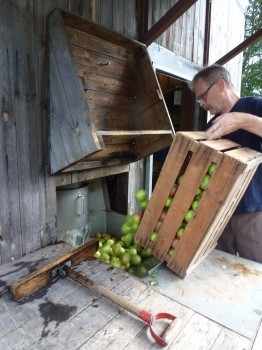
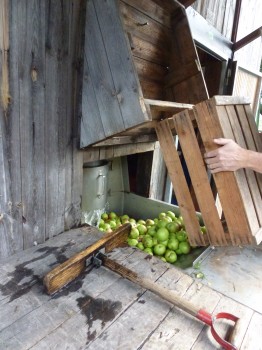
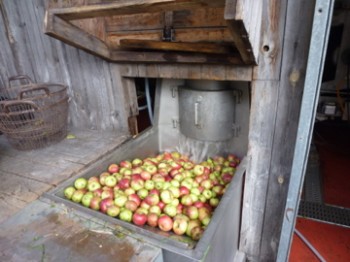
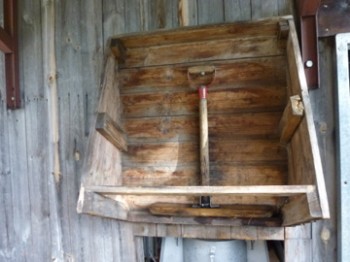

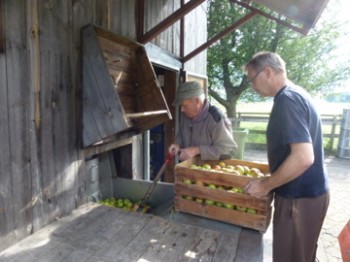
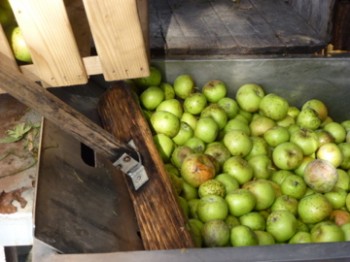
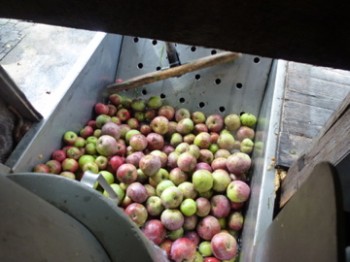

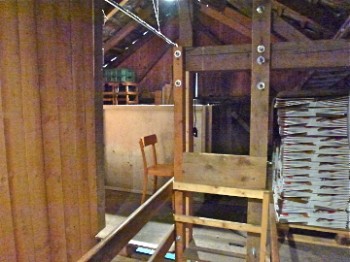
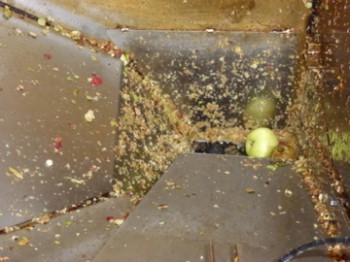
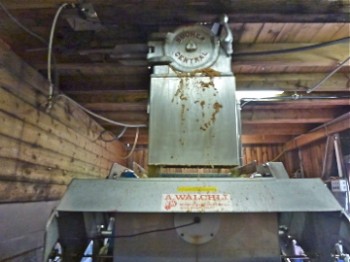
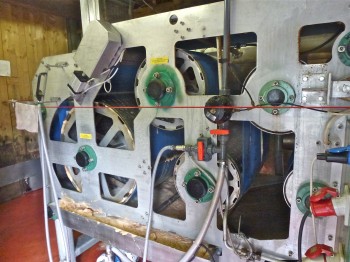
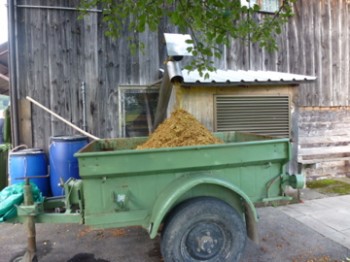
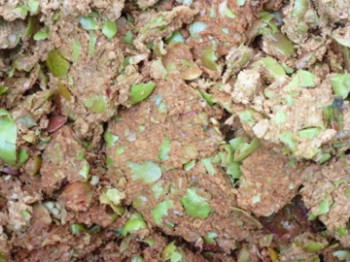

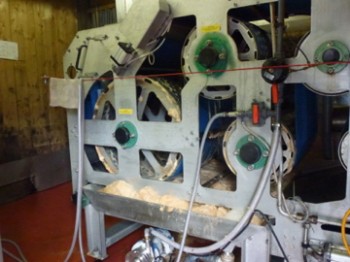
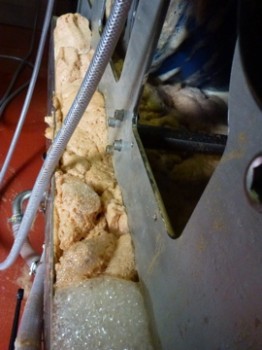
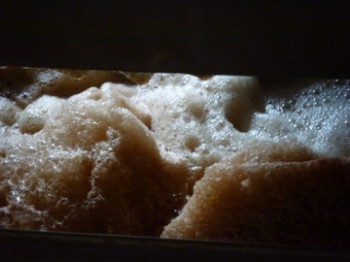
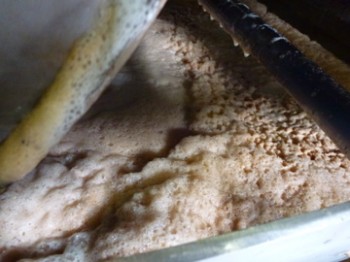

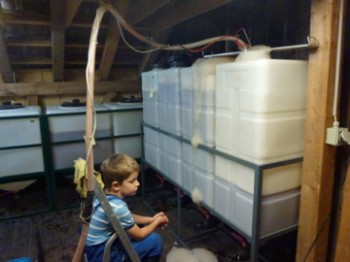


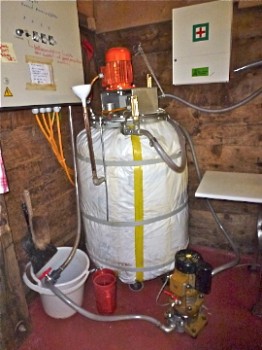
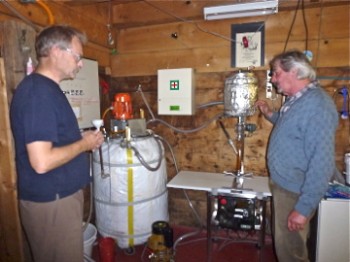
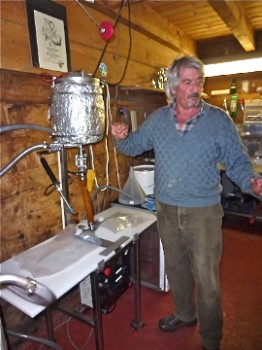
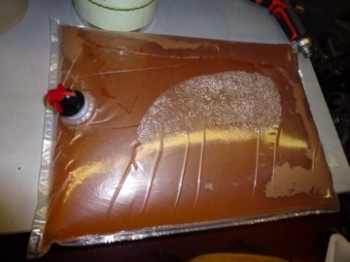

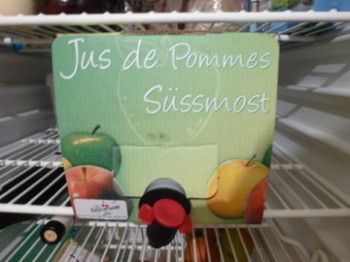
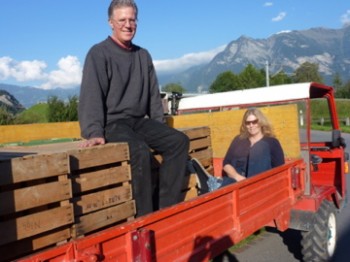





Speak Your Mind